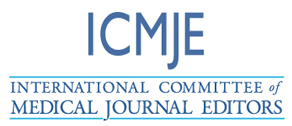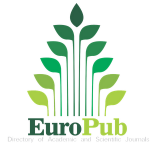Effectiveness Difference of Pomegranate Peel Extract and Green Tea on Salivary pH
DOI:
https://doi.org/10.55677/IJCSMR/V3I3-01/2023Keywords:
Green tea, pomegranate peel extract, salivary pHAbstract
Background: The acidic environment due to the interaction of bacteria in the oral cavity triggers the occurrence of dental caries. It is characterized by the increased of bacterial activity at critical pH (4.5-5.5). Mouthwash is used as an antibacterial, but it has unwanted side effects. Herbal mouthwash is considered as an alternative, such as pomegranate peel extract and green tea which have been tested for their effectiveness against Streptococcus mutans bacteria.
Objective: To provide information on the differences in the effectiveness of pomegranate peel extract and green tea on salivary pH.
Methods: This is an experimental study with a pretest-posttest control group design. Normality test using Shapiro-Wilk, and statistical test using Paired T-Test and Independent T-Test.
Results: There was a significant difference in effectiveness between pomegranate peel extract and green tea on salivary pH.
Conclusion: Pomegranate peel extract is able to increase salivary pH while green tea lowers salivary pH. This difference in effectiveness allows for different indications to take advantage of the two types of herbs.
References
Septiani D, Sughesti D, Susanti D, Sihombing MT, Novitasari S. The Importance of Maintaining Dental and Oral Health in the Era of the Covid-19 Pandemic, for the Continuity of Business Activities. PKM UNPAM Dedication Journal. 2022; 3 (1): 57.
Utami S. The Relationship Between Dental Plaque and The Severity of Dental Caries Among Preschool Children. IDJ. 2013; 2 (2): 10.
Satriani SE. National Dental Health. Data and Information Center of the Indonesian Ministry of Health. Jakarta; 2019.p. 1-2.
Paramanandana PGA, Prasetya MA, Susanti DNA. Relationship between Saliva Volume and Degree of Acidity (pH) on Caries Incidence of Children 7-9 Years Old at State Elementary School 5 Sumerta Denpasar. Bali Dent J. 2020; 4 (1): 45.
Suratri MAL, Jovina TA, Tjahja I. Effects (pH) of Saliva by Dental Caries Occurrence in Pre-School Children Age. Health Research Bulletin. 2017; 45 (4): 242.
Sari DN, Cholil, Sukmana BI. Comparison of the Effectiveness of Alcohol-Free Mouthwash Containing Cetylpyridinium Chloride and Chlorhexidine on Plaque Reduction. Dentino Journal Dent. 2014; 2 (2): 179.
Gurning D, Nathaniel D, Meila O, Sagala Z. Antibacterial Activity of Longevity Spinach (Gynura Procumbens (Lour.) Merr.) Bark Extract In 70% Ethanol and It’s Mouthwash Formula Against Streptococcus Mutans. Indonesian Pharmacon Journal. 2018; 15 (2): 59.
Oktanauli P, Taher P, Prakasa AD. Effects of Alcoholic Mouthwash on Oral Cavity Tissue. Journal of Medical Science and Technology. 2017; 13(1): 4.
Talumewo M, Mintjelungan C, Mowor M. Differences in the Effectiveness of Alcoholic and Non-Alcoholic Antiseptic Mouthwashes in Reducing Plaque Accumulation. Pharmacon Journal. 2015; 4 (4): 7.
Susi, Alioes Y, Putri CJ, Erawati S. Increasing The pH of Saliva by Gargling with Basil Leaf Infusion.Journal of Oral Dental Sciences Prima. 2020; 1 (4): 3.
Sharkawy MS, Mostafa MH, Malt MA. Evaluation of the Antimicrobial Effect of Pomegranate Extract on Streptococcus Mutans. Al-Azhar Dental Journal. 2019; 6(4): 470.
Kadam NS, Kunte SS, Patel AR, Shah PP, Lodaya RR, Lakade LS. Comparative Evaluation of the Effect of Pomegranate Peel Extract and Chlorhexidine 0.2% Mouthwash on Salivary pH in Children between 6 and 8 Years of Age: An In vivo Study. Journal of International Oral Health. 2019; 1 (11): 40.
Sartika S, Kawengian SES, Mariati NW. The Effectiveness of Gargling with Green Tea Brewed Water in Reducing Plaque Accumulation. Dental e-Journal. 2015; 3 (2): 428.
Umar D, Dilshad B, Farhan M, Ali A, Baroudi K. The Effect of Pomegranate Mouthrinse on Streptococcus Mutans Count and Salivary pH: An In Vivo Study. Journal of Advanced Pharmaceutical Technology & Research. 2016; 7 (1): 16.
Aljufri. The Effect of Gargling with Green Tea on Saliva pH in Class V Students at SDN 04 Guguk Malintang, Padang Panjang Timur District, Padang City. Science Tower Journal. 2017; 11 (74): 26-29.
Soraya C, Sunnati, Munawar S. Effect of Robusta Coffee and Arabica Coffee on Changes in Saliva pH (in vitro). Cakradoya Dental Journal. 2013; 5 (1): 520.
Putri MP, Susi, Sari DP. Effect of Gargling with Green Tea and Black Tea Solutions on Saliva pH. Andalas Dental Journal. 2019; 7 (1): 8.
Mardinati E, Prasko. Changes in Saliva pH between Gargling Tea Bags and Tea Tubruk on PKK group, Muktiharjo Kidul Village. Dental Health Journal. 2017; 4 (2): 41.
Oinike I, Prihatiningsih T, Batubara L. The Effectiveness of Probiotic Chewing Gum in Increasing Saliva pH and Saliva Flow Rate. Diponegoro Med J. 2018; 7 (1): 255.
Diniasti M, Delima AR, M Zakki. Antibacterial Effect of White Pomegranate Peel Extract (Punica Granatum L) Against Streptococcus Sanguis. Odonto Dental Journal. 2020; 7 (1): 19.
Yusriyanti M. Comparison of the Effectiveness of Gargling Cocoa Seed Extract, Green Tea Catechin Extract, Lime Extract on Saliva pH of Children with ECC. Thesis. Makassar: Hasanuddin University; 2016.p. 66-73.











